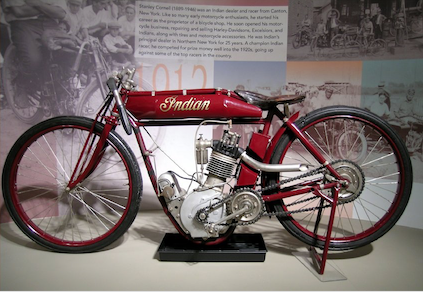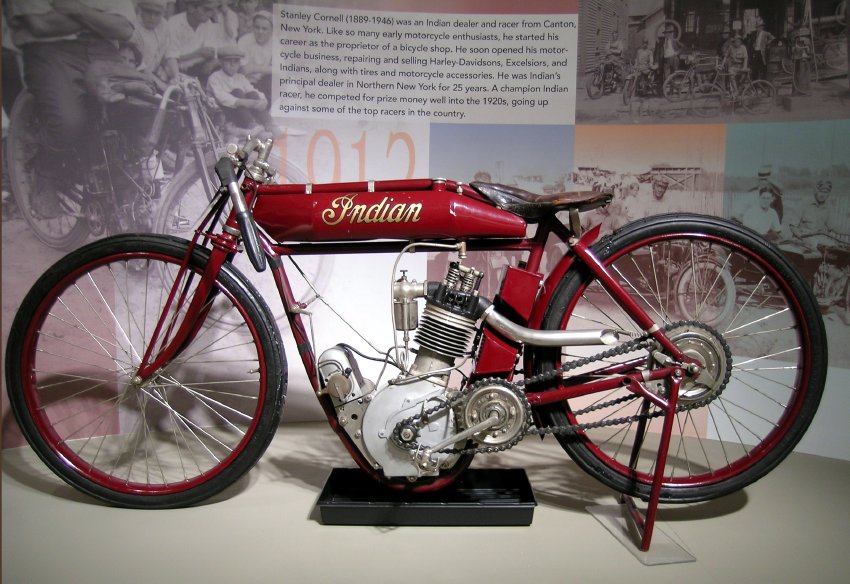
NEW YORK — The story of the iconic Indian motorcycle began in 1901 in Springfield, Mass., when bicycle maker, racing promoter, and former racing champion George Hendee hired Oscar Hedstrom to build gasoline engine-powered bikes as a way to pace bicycle races. Hendee had previously started and run a bicycle company. In 1902, the first Indian motorcycle was sold. That same year, an “Indian” made its public racing debut, winning a competition that started in Boston and finished in New York City.
“The machine [Hedstrom] created proved to be powerful and reliable, establishing the company’s reputation for outstanding performance. Later that year the company’s first factory was established in downtown Springfield,” says a commentary on the Indian Motorcycles website.
Indian’s most beloved bikes are the Scout, which were produced 1920 to 1946, and the Chief, (1922 until the company went bankrupt in 1953). Today, Indians are still made, albeit under new management, and they’re still popular with both street riders and racers.
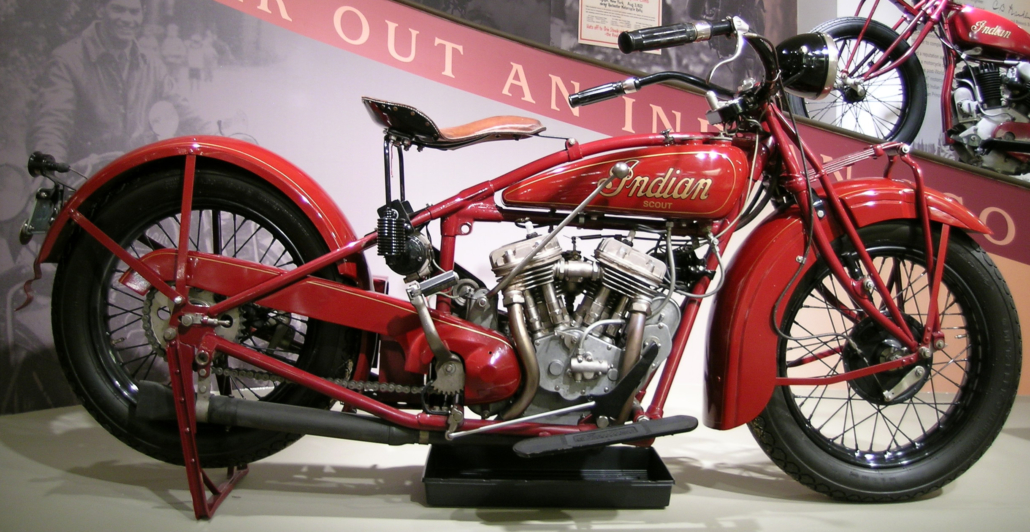
In the 1910s, Indian launched many technological innovations, including the 1000cc Powerplus engine, but the 1920s took the firm to the next level. In 1920, they introduced the Indian Scout, which has remained to this day one of its bestselling models. It was followed two years later by the Chief, then the Big Chief in 1923, the Prince in 1925 and the Ace in 1927. The firm also changed its name to The Indian Motocycle Company in 1923 (the name had no “r” in “motorcycle” when used in conjunction with the name Indian). Then in 1927, Indian introduced its renowned 45-ci, 750cc V-twin engine. This larger edition of the Scout engine is largely considered to be one of the company’s finest engines.
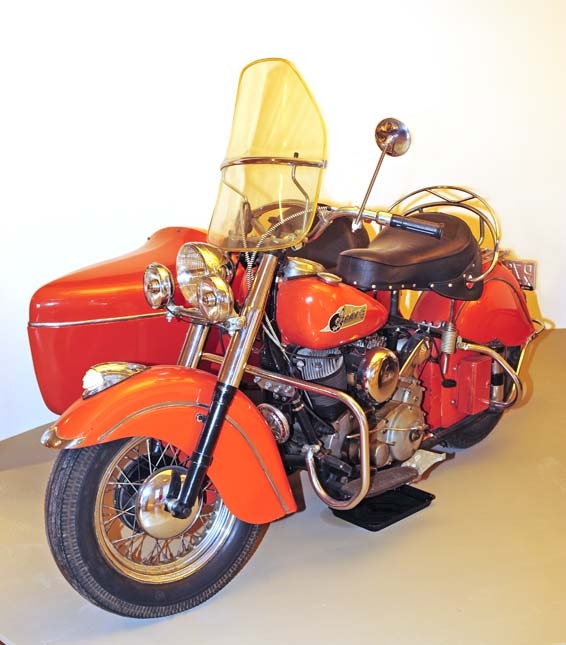
The Lyman & Merrie Wood Museum of Springfield History, part of the Springfield Museums in Springfield, Mass., not surprisingly has a fine collection of Indians. “We find that above all, our visitors enjoy seeing what they consider ‘true’ Indians, those made here in Springfield from 1901-1953,” a museum spokesperson said. “Despite the many efforts to resurrect the brand — the British bikes, the Taiwanese mini bikes, and most recently those made by Polaris, the enthusiasts we see here both as visitors to the museum and those who attend our annual Indian Day held each July really love the vintage bikes made right here in the city.”
The museum’s collection tells stories, whether about the classic early Indian board-track bikes and hill-climb models and the riders who dared to race them; the cycles developed for the military; or those made famous by the men and women who rode them, such as Erle “Pop” Armstrong, Freddie Marsh, the Van Buren sisters, and Louise Scherbyn.
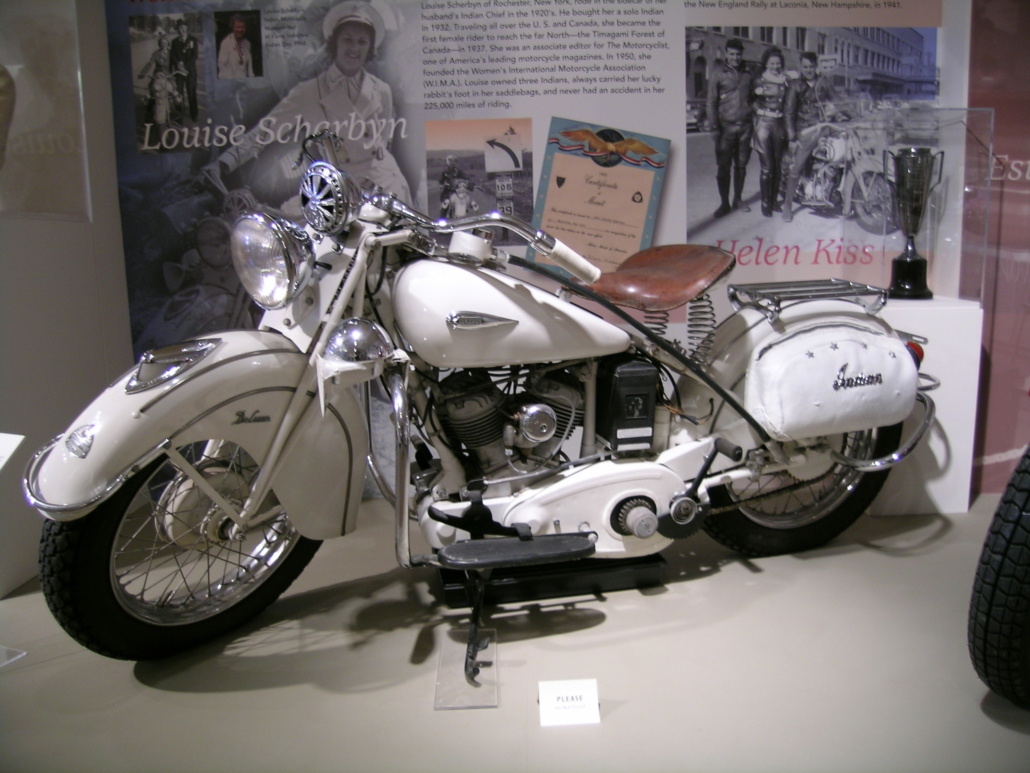
Some motorcycles in the museum’s collection are also appreciated for the people who restored them. One such example is an elegant 1929 101 Scout restored by the late George Yarocki, an expert on Indian motorcycles.
Indians are also desirable based on who raced or owned them. A 1912 Indian single-cylinder motorcycle is another standout in the museum’s collection. Stanley Cornell, an Indian dealer in upstate New York, owned and raced this four-valve, single cylinder bike. “We can tell that this bike was built exclusively for racing and not for street use, as the engine cases are un-numbered, with only a number ’87’ existing on the lower right,’ according to the museum spokesperson.”It was Indian practice not to number competition machines. What makes this bike even more unique is the fact that its original shipping crate, used to ferry the bike from race to race, still survives.”
Among other factors that play into why collectors choose a particular Indian motorcycle are the bike’s originality or quality of restoration, where required.
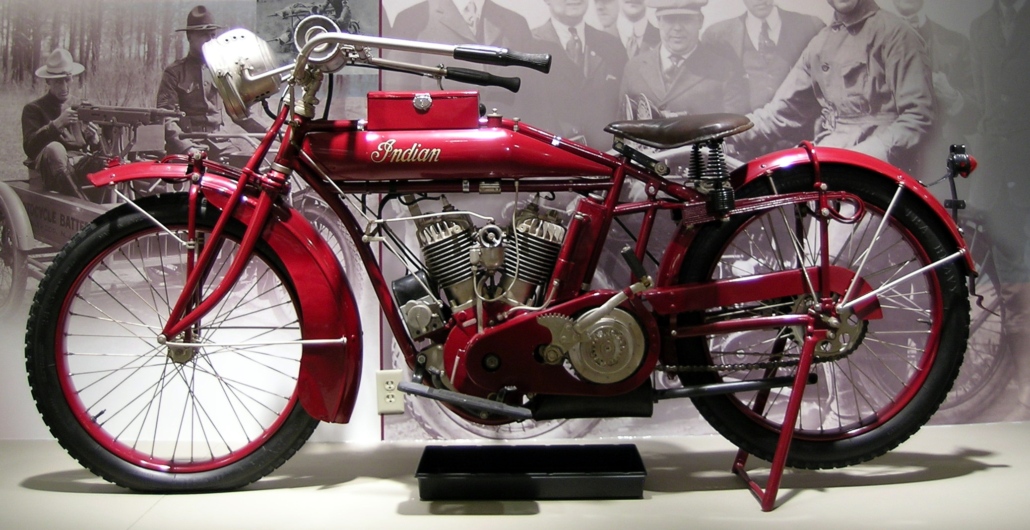
Among best-selling Indians at auction are the Indian Four model. Mecum Auctions sold a 1934 Indian Four with older restoration for $91,300 during its E.J. Cole sale in March 2015, as well as an 1940 Indian Four from the Larry Pedersen collection, restored to “show” condition, for $65,000 in January 2016. The Indian Four was produced from 1928 to 1942.
Another standout, and a perennially popular model, was a 1953 Indian Chief (frame no. CS6653, engine no. CS6653), one of the last Chiefs made, that sold at Bonhams’ Las Vegas motorcycle auction in January 2017 for $31,050. “Those iconic fenders are unmistakable and set the bike apart from anything else on the road. For a style so associated with the brand, it’s surprising that the outrageously valanced fenders didn’t make their first appearance until 1940, some 39 years after the company’s founding,” the Bonhams catalog noted.
From their stylish aesthetics to being fast, highly maneuverable and an elegant combination of weight and design, Indians remain highly coveted and hold pride of place in the choosiest riders’ garages.
# # #


